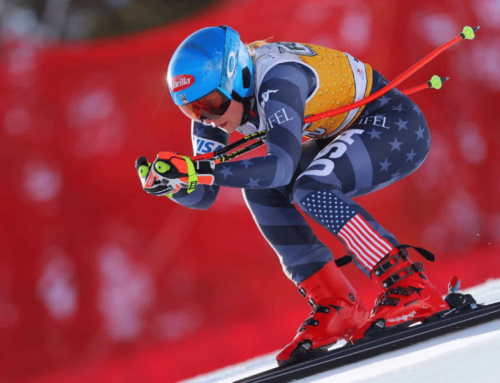The power of video in offseason training
Watching videos of yourself and World Cup racers is a powerful tool for strengthening important mental muscles such as confidence, intensity, and focus. It can also be used, when combined with mental imagery, to improve technique and tactics. Another benefit is that watching yourself ski fast and top World Cup athletes ski faster just gets you plain fired up, which will help inspire and motivate in your off-snow conditioning efforts.
If you’re like most racers, you watch a lot of video during the winter as part of your training. Video enables you to more clearly understand and see what you need to work on, and you can learn a great deal by seeing fast skiing demonstrated by your favorite World Cuppers. Video is also a form of mental imagery that can help you generate the image and feeling of skiing your best.
The use of video tends to decline during the off-season when racers are focused on their conditions and other non-skiing activities. But its use should actually increase for the very same reason. Why? Because you aren’t on snow as much or at all which means you can lose the feeling of fast skiing. Video can keep you mentally sharp and allow you to develop your ski racing skills when you’re not on snow.
But just watching video isn’t going to maximize its benefits during the off-season. Instead, you need to use video in specific ways to help you gain the most benefits.
Common Mistakes
If you’re like most ski racers, you are probably not watching video in the most effective way. For example, there is a tendency among racers and coaches alike to focus on mistakes. This emphasis seems to make sense because if you watch your mistakes, you can learn from and correct them. But watching only mistakes ingrains a negative image and feeling into your mind and body much like physically practicing bad technique or tactics will instill bad skiing into your mind and muscles.
You may also focus too much on the details of the video, for example, stance or hand position. Video is used mostly for analysis, so it’s easy to obsess about every little detail. Though there is a place for analyzing the minutiae of your racing, too much will cause you to lose sight of what is really important, namely, the image and feeling of skiing fast.
Watching World Cup videos is fun and motivating. I’m sure you have your favorites and you like to watch and fantasize about skiing like them one day. But watching too much of them and not enough of yourself may cause you to imagine yourself skiing like one of them rather than the way you ski. That sounds good in theory, but the reality is that you can’t ski like the top guys and gals (at least not yet!).
You may also watch World Cup skiers that you have no chance of emulating because they are so physically different from you. For example, if you’re tall and thin, you shouldn’t imagine yourself skiing like Marcel Hirscher (who is short and stocky) or Anna Fenninger (who is short and petite).
Rules of Video Watching
When you watch video follow these rules:
- Instead of “thinking” about the videos (i.e., analyzing, critiquing, evaluating), just open your focus and allow yourself to experience the “gestalt” of videos, that is, the over-all images of good and fast skiing, and the images and feelings they trigger in you. Allow the images of the videos flow through your mind and into your body where they most need to be.
- Though you can learn about what you need to work on by watching your mistakes, I recommend watching at least 75 percent highlight videos of yourself skiing fast. Seeing and feeling your best skiing allows your mind and body to absorb positive images and feelings.
- To maximize the benefits of watching World Cup footage, identify racers who are physically and technically similar to you so you can more easily incorporate their technique into your style.
- Always imagine yourself skiing like you. Rather than imagining yourself skiing like your favorite World Cuppers, take what they do so well technically and tactically and incorporate those into your own skiing.
Video as Mental Imagery
As you may know, I’m a huge believer in the power of mental imagery. And video, though not often thought of this way, is a powerful type of mental imagery. You can incorporate mental imagery into your use of video by including it in your video sessions. Here’s how:
- Watch a run of yourself on video identifying what you did well and where you need to improve.
- Immediately close your eyes, and see and feel yourself skiing just the way you want. Ingrain the positive images and feelings from the video into your imagery.
- If you made mistakes in your video run, rewind and edit the video in your mind’s eye by redoing the videoed run and making the necessary corrections in your imagery.
I encourage you to commit to a consistent program of video (and mental imagery) before the snow flies this winter. If you do, I can assure you that you will be mentally and physically better prepared to ski your fastest and achieve your ski racing goals next winter.
Are you a coach? You might be interested in Prime Ski Coaching 404: Psychology of Training Champion Ski Racers. This 4-week course shows coaches how to incorporate mental training into their overall athlete development program. Team discounts available.
Download the U.S. Ski Team powered by SkiRacing.com app in the App Store and Google Play store to watch World Cup video highlights from last season.





















